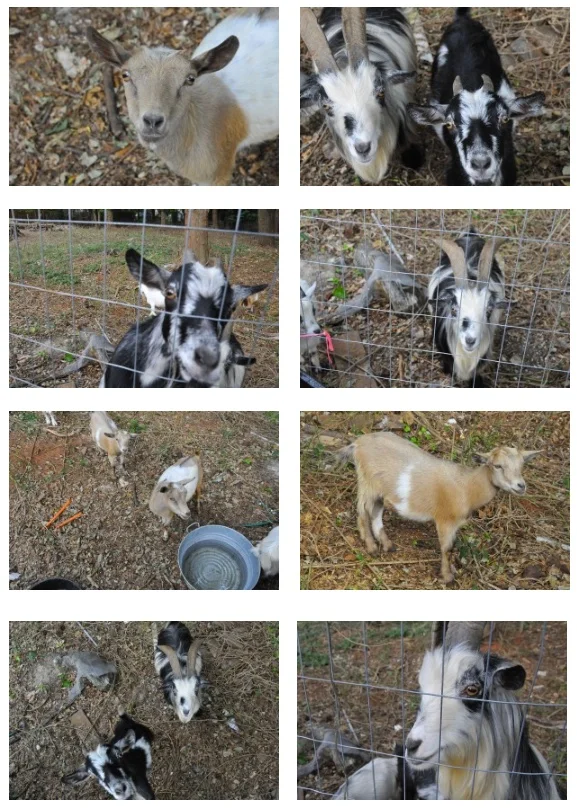Though goats have been used for centuries to clear unwanted vegetation, we just recently began using these “eating machines” for land clearing on our building sites. We had a wonderful experience with Michael and Kristin Swanson at Get Your Goat Rentals www.GetYourGoatRentals.com. They trucked in a herd of goats to one of our Decatur properties that needed some serious clearing prior to building.
Upon arrival the goats bounded out of the trailer doors and immediately got to work munching on privet, ivy, kudzu even poison oak—mangled, tangled and embedded vegetation that a bulldozer could never reach. The results were so dramatic and impressive that it planted the thought of getting our own fleet. After all, we have plenty of properties that were in dire need of the same kind of treatment. Without a doubt the goats would always have plenty to do.
So, a few months ago we purchased 6 Nigerian Dwarf Goats from a farm in the North Georgian foothills of the Appalachian Mountains. Our goats are hard core workers—they never complain and don’t take smoke breaks. They work quickly and efficiently and seem to have an instinct for tackling tough jobs. In fact, it seems—the tougher the better.
We transport our half dozen goats from site to site in my husband’s amply roomed minivan. Depending on the amount of overgrowth and undergrowth, it takes two to three weeks for the goats to complete a project. Of course, after a long day of munching they love to relax on the cool grass under the nearest tree shade.
Goats’ natural curiosity and agility make them the ideal plant predators especially in precarious and hard-to-reach places. This “conservation grazing” has no negative impact on the environment and (obviously) requires no gas or human labor. It’s also more economical than you might imagine.
Honestly the best part of conservation grazing is forging a bond with these scruffy creatures. We quickly attached to their quirky energy and idiosyncratic personalities. Each has his own distinctive coloring and markings; consequently pet names inevitably follow. My 11 year-old daughter Abby is our official goat-namer: Snowy, Mojo, Missy, Autumn, Alice, and Hannah are her picks for our current batch of goats (we have a feeling more are coming).
Virginia is pictured here with Snowy. Snowy is a real task-masker—nibbling, gnawing, biting and chewing from sun up to sun down. However, it’s nice to know that despite his devout work ethic even Snowy the goat takes a quick hug break every now and then.
Stay tuned for more photographs courtesy of www.GetYourGoatRentals.com




















